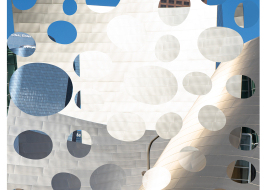Rickey Benjamin"Simple fractions"Raoul and Graziella de Picciotto Building for Scientific and Technical Support, 3rd floor
Ambitious scientists who sought to understand the molecular mechanisms underlying evolution sparked M.C. Escher’s interest and imagination. The contemporary zeitgeist – a spirit of constant change and innovation – led him to develop a new branch of research, which can be dubbed “evolutionary tessellations.” Rather than traditional regular tessellation with identical tiles, Escher proposed, experimented with, and demonstrated tessellations with continuously changing tiles – wherein change itself is the only constant factor in the system.
Rickey Benjamin reveals, in the works presented in this exhibition, that our ability to cope with “plot-related” evolutionary changes of form encounters limitations when identical formal structures are placed in different and opposing directions. Among other reasons, this difficulty is due to the well-defined and highly compartmentalized division of roles among the different components of our brain, and to the minute time periods in which the communication between these components transpires. In her works, with their overwhelming formal possibilities – which are accompanied by various meanings and “suggestions” regarding the “real” reality – Benjamin forces us to stretch our perception to the limit. And even while doing so, if we remain within the work’s graphic space, we strain to find our “right” place in it, something that to a large extent simulates our actual condition, here and now.













